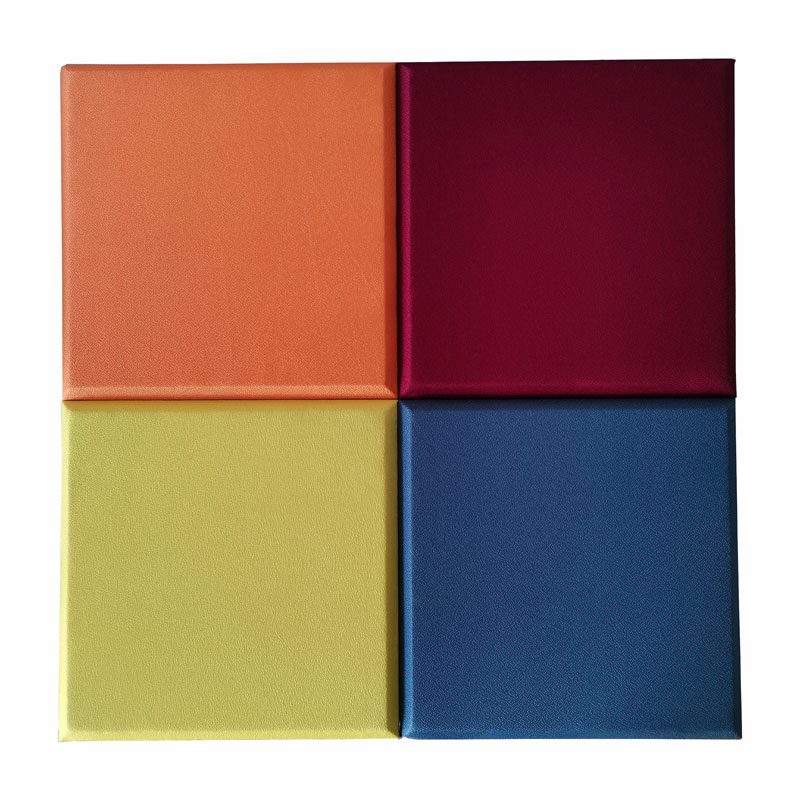How Do Fabric Acoustic Panels Improve Sound Quality and Interior Aesthetics?
2025-11-14
Fabric Acoustic Panels are designed to optimize acoustic environments by reducing echo, reverberation, and background noise. Combining functional performance with aesthetic appeal, these panels are widely used in offices, recording studios, restaurants, theaters, and home spaces. The primary goal of Fabric Acoustic Panels is to create a balanced, pleasant auditory environment while enhancing interior decor. With advanced materials and innovative designs, these panels can cater to diverse architectural and interior requirements.
Modern Fabric Acoustic Panels are engineered with high-density core materials covered by premium fabrics. Their surface textures, colors, and shapes can be customized to complement any interior design theme. The panels are lightweight, easy to install, and capable of providing both sound absorption and visual elegance. Choosing the right acoustic solution requires understanding the panel’s performance, material specifications, and suitability for specific spaces.
Key Product Parameters of Fabric Acoustic Panels:
| Parameter | Description |
|---|---|
| Core Material | High-density fiberglass, mineral wool, or eco-friendly PET foam |
| Surface Cover | Polyester fabric, wool, or blended textiles |
| Thickness | 20mm – 100mm (customizable) |
| Sound Absorption Coefficient | NRC 0.7 – 1.0 depending on thickness and material |
| Dimensions | Standard 600x600mm, 1200x600mm, or custom sizes |
| Fire Rating | Class A (UL 94, ASTM E84) |
| Installation Method | Wall mount, ceiling mount, adhesive, or hanging system |
| Color Options | Wide range of colors and patterns available |
| Acoustic Performance | Reduces echo, improves speech clarity, enhances music quality |
| Maintenance | Removable fabric cover for easy cleaning |
Fabric Acoustic Panels are designed to absorb mid- to high-frequency sound waves, preventing unwanted reflections and creating a calmer, quieter space. Their versatility allows them to serve both functional and decorative roles, making them an ideal choice for professional and residential environments alike.
Why Are Fabric Acoustic Panels Critical for Modern Workspaces and Public Areas?
In modern offices, open-plan layouts are common, but they often lead to excessive noise, distractions, and decreased productivity. Fabric Acoustic Panels address these challenges by controlling sound levels and improving clarity for communication. By strategically installing panels on walls or ceilings, businesses can create a more focused work environment and enhance employee well-being.
For public spaces like restaurants, hotels, and theaters, noise management is equally crucial. High levels of background noise can compromise customer experience, and poorly treated spaces often result in echoes or auditory discomfort. Fabric Acoustic Panels help optimize sound distribution, providing comfortable and consistent acoustic conditions.
Additionally, these panels contribute to aesthetic improvements. They come in various textures, colors, and patterns, allowing architects and interior designers to integrate them seamlessly into the overall design theme. Unlike traditional acoustic solutions, which may appear industrial or utilitarian, fabric-covered panels provide a sophisticated visual appeal while maintaining superior sound performance.
Key Advantages of Fabric Acoustic Panels:
-
Enhanced Acoustic Comfort: Reduces echo and noise pollution for better concentration and auditory clarity.
-
Versatile Design Options: Supports various shapes, colors, and fabrics to suit modern interior styles.
-
Eco-Friendly Materials: Many panels are made from recycled PET or sustainably sourced fibers.
-
Durability: Resistant to wear, tear, and environmental factors, ensuring long-term use.
-
Fire Safety Compliance: Meets stringent fire safety standards for commercial applications.
By integrating both form and function, Fabric Acoustic Panels provide a practical solution that addresses noise issues without compromising design aesthetics. The combination of acoustic efficiency and style ensures their relevance across a wide range of environments.
How Do Fabric Acoustic Panels Function, and What Installation Techniques Maximize Their Performance?
Fabric Acoustic Panels function primarily through sound absorption. Sound waves hit the panel surface and penetrate the core material, which converts sound energy into small amounts of heat. The thickness, density, and composition of the core material determine the panel’s effectiveness at absorbing different frequencies. Generally, thicker panels excel at low-frequency absorption, while mid- and high-frequency sounds are effectively absorbed by standard thickness panels.
Installation Techniques to Maximize Performance:
-
Wall Mounting: Panels are mounted directly on walls where sound reflection is highest, such as opposite speaker systems or near meeting areas.
-
Ceiling Installation: Suspended panels or ceiling tiles can reduce reverberation in large spaces.
-
Combination Approach: Combining wall and ceiling panels ensures uniform acoustic treatment across a room.
-
Spacing and Placement: Panels should cover at least 20-30% of the room’s surface area for optimal performance.
-
Hanging Systems: Floating or angled installations can enhance both sound absorption and decorative appeal.
Frequently Asked Questions (FAQs):
-
Q: Can Fabric Acoustic Panels be customized for unusual room shapes?
A: Yes, panels can be cut into custom shapes, sizes, and patterns to fit irregular spaces, ensuring effective sound absorption without compromising aesthetics. -
Q: How do Fabric Acoustic Panels compare to traditional foam panels?
A: Unlike standard foam panels, fabric-covered panels provide superior design flexibility, higher durability, and better fire resistance while maintaining comparable or better acoustic performance.
Proper installation and material selection are critical for achieving maximum sound absorption and visual integration. Consulting acoustic experts or following recommended layout guidelines ensures optimal results.
What Are the Future Trends and Innovations in Fabric Acoustic Panels?
The demand for Fabric Acoustic Panels continues to grow as urban spaces become denser and noise management gains importance. Future trends indicate a strong focus on multifunctional panels that combine acoustic performance with sustainability, technology integration, and advanced aesthetics.
-
Eco-Friendly Materials: There is increasing adoption of recycled PET, bamboo fiber, and low-emission fabrics to reduce environmental impact while maintaining acoustic efficiency.
-
Smart Acoustic Solutions: Integration with smart building technology allows panels to adapt to changing sound conditions, providing dynamic acoustic control.
-
Customizable Design Trends: Modular panels that can be rearranged or replaced easily will become more popular, offering flexibility for evolving interior designs.
-
Enhanced Fire and Health Safety Standards: Advanced coatings and core materials improve fire resistance, antimicrobial properties, and indoor air quality.
-
Integration with Lighting and Decor: Panels are now designed to incorporate LED lighting, patterns, and textures, creating visually appealing acoustic art installations.
As Fabric Acoustic Panels evolve, they are expected to become an integral component of sustainable architecture and interior design. They will continue to balance aesthetics, functionality, and environmental responsibility.
Conclusion:
Fabric Acoustic Panels are a versatile solution for managing sound in both commercial and residential spaces. They combine effective noise control, customizable design, and long-lasting durability. With advancements in eco-friendly materials, smart integration, and aesthetic options, these panels are poised to remain essential in modern interior environments. For those seeking high-quality, visually appealing acoustic solutions, QDBOSS offers a comprehensive range of Fabric Acoustic Panels tailored to professional and residential applications.
Contact Us to explore product options, request custom sizes, or consult on acoustic design solutions.



